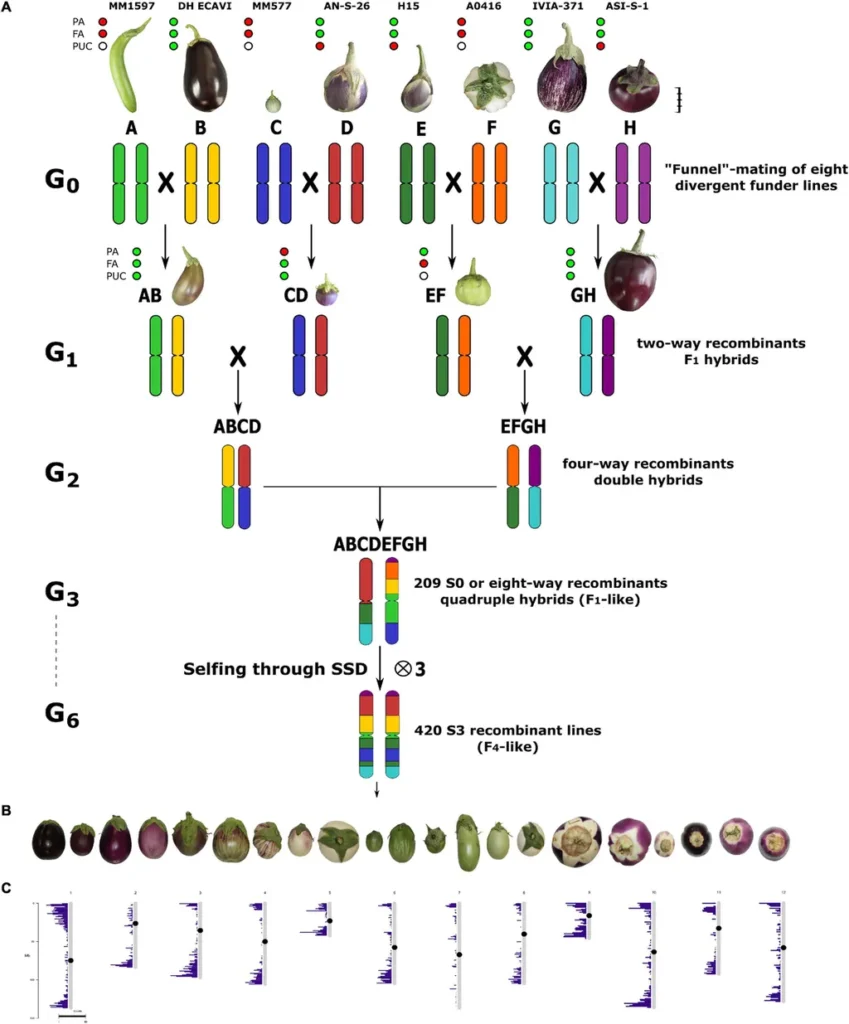In the heart of Queensland, Australia, a team of researchers led by Oluwaseun J. Akinlade from the Queensland Alliance for Agriculture and Food Innovation at The University of Queensland has made a significant stride in chickpea genetics. Their work, published in ‘The Plant Genome’ (which translates to ‘The Plant Genome’ in English), could reshape how we approach crop improvement, with potential ripple effects across the agricultural and energy sectors.
Akinlade and his team have developed a chickpea multi-parent advanced generation intercross (MAGIC) population, a sophisticated tool that captures a wide array of genetic diversity. This population, derived from eight founder lines, offers high statistical power for detecting quantitative trait loci (QTLs)—genetic markers linked to specific traits. The team’s research demonstrates the MAGIC population’s potential to dissect the genetics of complex traits, paving the way for accelerated crop improvement.
The team genotyped the MAGIC population using whole-genome sequencing, curating a total of 4,255 high-quality polymorphic single nucleotide polymorphism (SNP) markers for their analyses. They characterized the population’s diversity, linkage disequilibrium decay, marker coverage, segregation distortion, allelic variation, and structure. This comprehensive characterization confirmed the MAGIC population’s suitability for genetic studies.
To showcase the population’s effectiveness, the researchers focused on two key agronomic traits: days to 50% flowering and plant height. Using both a genome-wide mapping approach and a haplotype-based mapping approach, they identified several new QTLs associated with these traits. “Our analyses not only confirmed the role of genomic regions previously reported in the literature but also unveiled several new QTLs,” Akinlade explained. “This dual approach enhances our understanding of the genetic architecture underlying these complex traits.”
The research also highlighted the potential for trait improvement through stacking desirable genetic segments, or haploblocks. For instance, selecting the top 10 haploblocks could lead to the development of early flowering chickpea varieties. Similarly, choosing desirable haplotypes on chromosome 4 could improve plant height. These findings offer a roadmap for breeders to enhance chickpea varieties, potentially boosting yields and resilience.
The implications of this research extend beyond the field. Chickpeas, a vital source of protein and other nutrients, play a crucial role in global food security. Improving chickpea varieties can enhance crop yields, reduce production costs, and increase farmers’ incomes. Moreover, as the world grapples with climate change, developing resilient crop varieties becomes increasingly urgent. This research provides a powerful tool to tackle these challenges.
In the energy sector, the development of improved crop varieties can contribute to the production of biofuels, offering a renewable and sustainable alternative to fossil fuels. As Akinlade noted, “Our work is not just about improving chickpeas; it’s about contributing to a more sustainable and food-secure future.”
The chickpea MAGIC population developed by Akinlade and his team is a valuable resource for researchers and pre-breeders. It offers a powerful tool to study the genetic architecture of complex traits and allelic variation, accelerating crop improvement in chickpea and potentially other crops. As we face the challenges of a changing climate and a growing global population, such advancements in agricultural science are more important than ever. This research not only advances our understanding of chickpea genetics but also opens new avenues for innovation in agriculture and beyond.

